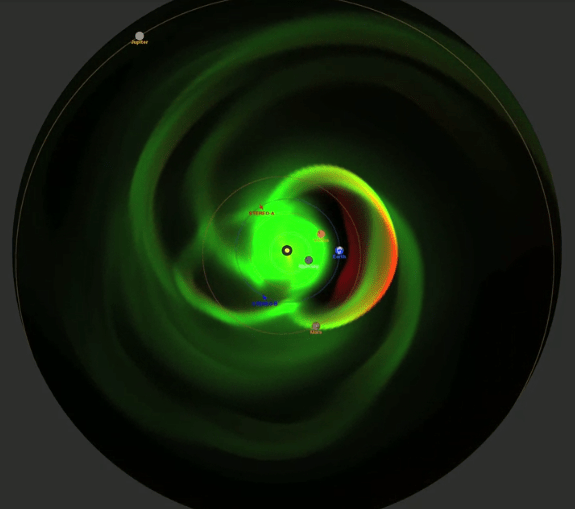An extreme solar storm in July 2012 just missed Earth’s atmosphere, and we’re all lucky it did, as it could have seriously damaged the planet’s electric power sources, according to University of Colorado scientist Daniel Baker.
“If it had hit, we would still be picking up the pieces,” Baker told NASA.
Solar storms begin with a explosion from the sun called a solar flare, which results in extreme radiation and strong plasma clouds. The most damaging results of the explosion are the plasma clouds, known as coronal mass ejections (CMEs).
Luckily, the solar storm occurred at the right time for Earth’s inhabitants.
“I have come away from our recent studies more convinced than ever that Earth and its inhabitants were incredibly fortunate that the 2012 eruption happened when it did,” Baker said. “If the eruption had occurred only one week earlier, Earth would have been in the line of fire.”
The storm could have caused widespread power blackouts. According to NASA, this would have disabled anything that plugs into an electrical socket, and most people wouldn’t have been able to flush their toilets, as many rely on electric pumps.
According to a National Academy of Sciences study, the storm would have cause about $2 trillion in damage, which would have taken years to fix completely.
Scientists say the storm was comparable to the 1859 Carrington event, when a solar storm caused telegraph lines around the world to spark, resulting in fires in some telegraph offices. That storm also ignited the Northern Lights down as far as Cuba and Hawaii.
Perhaps the most terrifying takeaway is that a solar storm could hit Earth in the next ten years. According to an analysis by Predictive Science Inc. physicist Pete Riley, there is a 12 percent chance that a solar storm as powerful as the Carrington event could hit Earth in the next ten years.
“Initially, I was quite surprised that the odds were so high, but the statistics appear to be correct,” Riley told NASA. “It is a sobering figure.”
Watch a NASA video explaining the solar storm:
Image via NASA Science Visualization Studio






